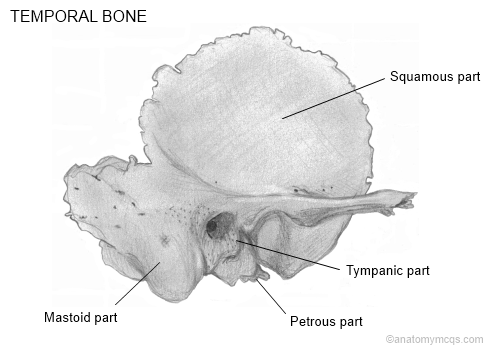Question #255
The temporal bone:
The temporal bone can be divided into four separate parts each with distinct features:
- Squamous – forms part of the flat lateral aspect of the skull. It has a zygomatic process and forms the mandibular fossa. Internally grooved by the middle meningeal vessels.
- Petrous – houses the middle and inner ear, forms the internal auditory meatus, and externally forms the styloid process. Other features include the anterior opening to the carotid canal, an impression for the trigeminal ganglion.
- Tympanic – forms the external auditory meatus and site of attachment of the tympanic membrane.
- Mastoid – forms the mastoid process behind the ear and is closely related to the sigmoid sinus which grooves the internal surface. It may have a mastoid foramen through which a vein from the sigmoid sinus may run.
There is a separate sphenoid bone which forms a number of different foramina including rotundum, ovale and spinosum.
N.B. Some texts consider the petromastoid part as one and the styloid process as a separate part.
